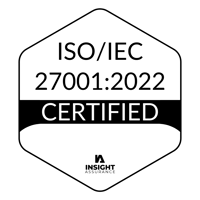IRS Reporting Requirements: Breaking Down Forms and Responsibilities
Continuing with the topic of the pending ACA reporting for the 2015 tax year, this post focuses on the specifics of Forms 1095-C and 1094-C, including how they’re different and what information is needed for each. In addition, the question of who is responsible for different areas of reporting is addressed.
What’s the difference between Forms 1095-C and 1094-C, and what information is needed for each one?
Form 1095-C, Employee Provided Health Insurance Offer and Coverage, should be provided to the IRS for each qualifying employee as an information return and to individual employees for use when filing their personal tax returns. Form 1095-C serves three purposes: 1) reports what, if any, health insurance was offered to employees and any safe harbor/relief provided to the employer; 2) determines if an organization is responsible for the employer shared responsibility provision; and 3) helps determine employee (and dependent) eligibility for the premium tax credit.
The following information needs to be included on Form 1095-C for all qualifying employees:
- Monthly status of full-time employees
- Contact/identifying information for employer and each employee
- Health coverage offerings, by month (including if none was offered)
- Employee share of monthly premium for lowest cost coverage
- What months each employee was enrolled in coverage
- What months (if any) the employer qualified for safe harbor or other relief
- For self-insured plans, monthly information regarding employees covered under said plan
Form 1094-C, Transmittal of Employer Provided Health Insurance Offer and Coverage Information Returns, serves as a transmittal document for Form 1095-C. Specifically Form 1094-C provides a summary of employee data regarding health coverage and determines any employer shared responsibility penalty and the proposed amount of payment. The following information needs to be included on Form 1094-C:
- Contact/identifying information for employer
- If an organization did/did not offer qualifying coverage to at least 70% of full time employees in 2015
- Number of 1095-C forms issued to employees
- Monthly full time employee counts
- Monthly total employee counts
- Any qualifications for transition relief
- If an organization is part of an aggregated applicable large employer group, information about each member must also be included
Who is responsible for reporting under IRS Sections 6055 and 6056?
IRS Section 6055: The purpose of Section 6055 is to determine and ensure that all individuals have qualifying health coverage, according to the individual mandate. However, reporting is determined by the type of coverage offered:
- Under fully insured plans insurance carriers must provide monthly coverage information for each employee using Forms 1094-B and 1095-B.
- Under self-insured plans for organizations with less than 50 employees, employers must provide monthly coverage information for each employee using Forms 1094-B and 1095-B.
- Under self-insured plans for applicable large employers (50+ employees) employers must provide monthly coverage information for each employee using Forms 1094-C and 1095-C. However, third party administrators are able to provide this information on behalf on clients.
IRS Section 6056: Under Section 6056 all applicable large employers must report plan and employee coverage information using Forms 1095-C and 1094-C (see above). Employers are responsible for all reporting under Section 6056 regardless of if they provide fully insured or self-insured coverage. Again, third party administrators are able to provide this information on behalf on clients.
In order to report fully and effectively, organizations need to pull information from many departments within the organization, such as payroll and HR, and outside sources such as brokers, benefits administrators, and payroll vendors (if using). All involved parties will need to work in tandem to manage and provide the information necessary to stay in compliance with reporting requirements. If this process has not yet started for your organization, it is recommended that all stakeholders meet as soon as possible to determine what information is needed and who bears the responsibility for it.
What are employees responsible for reporting?
Employees are required to report health insurance status on their personal tax return as part of the individual mandate. Individual reporting may require information found on Form 1095-C. In addition, based on employer information found on Form 1095-C, employees can determine if they continue to qualify for a premium tax credit or if they owe any shared responsibility payments.
Join us on September 19th for a webinar run by seasoned healthcare broker Rachel Johnson, who will walk through each new reporting form step-by-step.
The information and materials herein are provided for general information purposes only and are not intended to constitute legal or other advice or opinions on any specific matters and are not intended to replace the advice of a qualified attorney, plan provider or other professional advisor. This information has been taken from sources believed to be reliable, but there is no guarantee as to its accuracy. This communication does not constitute a legal opinion and should not be relied upon for any purpose other than its intended educational purpose.
.png?width=1501&name=Nonstop_Logo-22-Horizontal%20(2).png)



